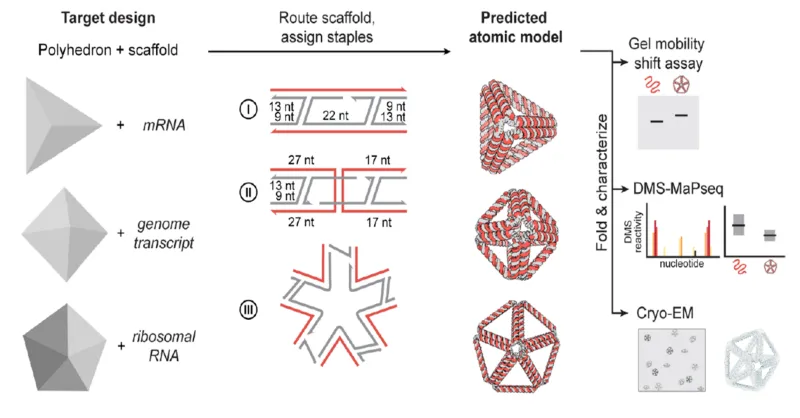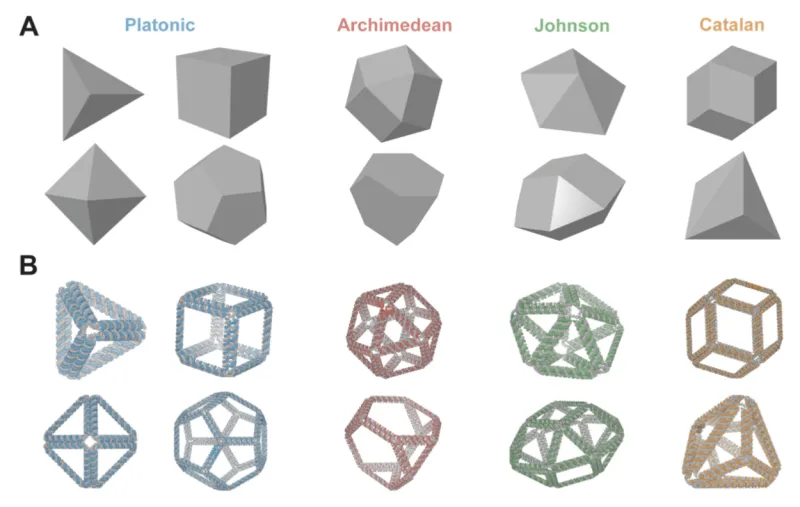RNA Scaffolded Wireframe Origami
This technology is a method of designing scaffolded RNA nanostructures of customizable shape. It offers a variety of clinical applications, including in vaccines and in vivo delivery of RNA-based payloads such as functional RNAs and mRNAs.
Researchers
-
rna scaffolded wireframe origami and methods thereof
United States of America | Published application
Figures
Technology
This method involves determining the structure’s geometry based on an inputted 3D polyhedral or 2D polygonal shape. Once the shape is inputted, the process continues by identifying a route for a single-stranded RNA scaffold to trace throughout the desired shape. The process concludes by generating the sequences of the scaffold strand and optionally the nucleic acid sequence of the “staple strands”—the short strands which guide the folding of the scaffold into the desired shape. Identifying the route of the scaffold requires a multi-step process involving creating a spanning tree, which establishes connectivity between each vertex in the nanostructure. This spanning tree can be used to calculate a Euler circuit (a trail in a graph which visits every edge exactly once) to represent the path the scaffold traces. Nanostructures produced through this process may also contain a molecule such as a peptide nucleic acid (PNA), protein, lipid, etc. bound to or encapsulated within the structure.
Problem Addressed
Scaffolded DNA origami has previously been demonstrated as a way of creating nanostructures made of folded DNA with user-defined geometries. However, RNA origami—the same principle as DNA origami but with RNA serving as the nucleic acid scaffold—has been explored less, with especially little focus on DNA/RNA hybrid origami (which is one embodiment of this technology that uses both DNA and RNA in the same nanostructure). In light of its potential for numerous clinical applications, there is a need for robust methods of producing 3D RNA-scaffolded origami. This technology meets this demand by outlining a process of creating customized RNA and DNA/RNA hybrid scaffolded origami with user-defined polyhedral geometry. RNA origami offers unique advantages not possible through DNA origami, such as biomedical delivery of mRNA, characterization of the tertiary structure of long RNAs, and production of artificial ribozymes.
Advantages
-
Production of custom-shaped RNA and DNA/RNA hybrid nanostructures
-
Can be conjugated with other molecules for extended applications
-
Variety of uses provides flexibility to a licensing company
Publications
Molly F. Parsons, Matthew F. Allan, Shanshan Li, et al. 3D RNA-scaffolded wireframe origami. Nature Communications. 2022 Aug 15. doi: 10.1038/s41467-023-36156-1
License this technology
Interested in this technology? Connect with our experienced licensing team to initiate the process.
Sign up for technology updates
Sign up now to receive the latest updates on cutting-edge technologies and innovations.

